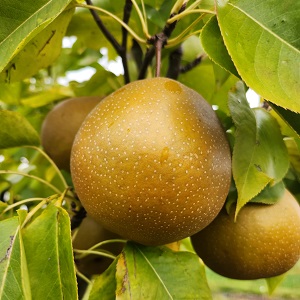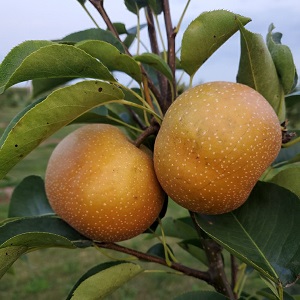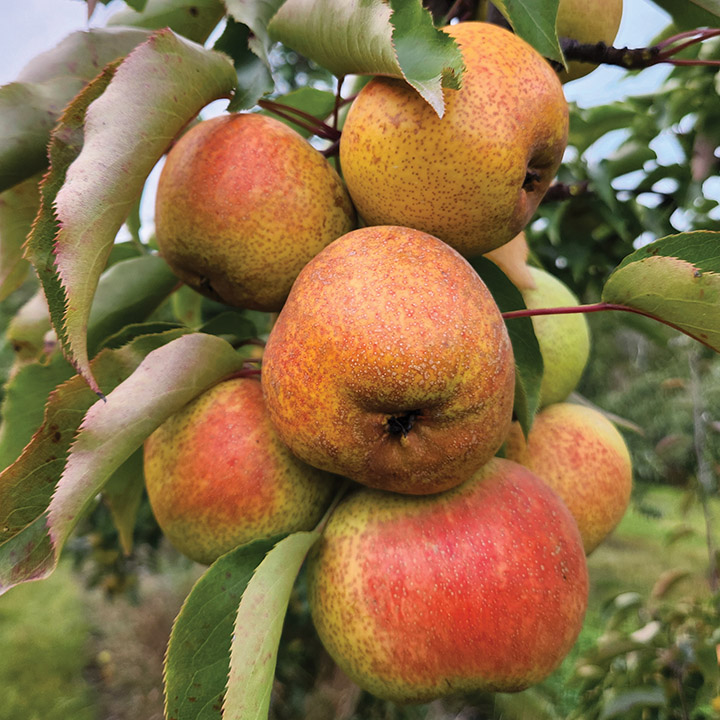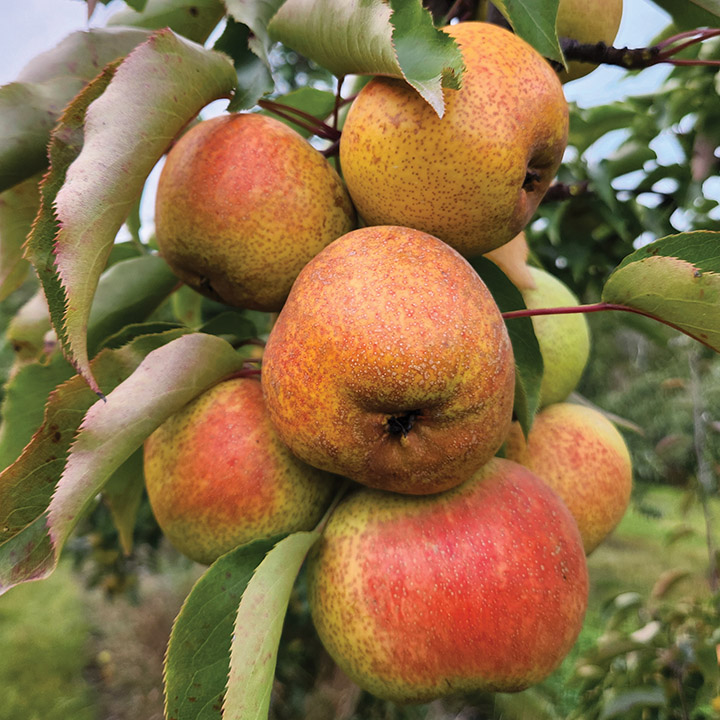Asian Pear : OLYMPIC Large Semi-Dwarf (OHxF97)
$53.95
Although this is clearly a superior pear, it seems slightly unusual that a single variety should attract so many names. The Olympic has been sold as 'Korean Giant', 'Large Korean', 'A-ri-Rang', 'Dan Bae', and, last, but not least-'Kenko'. In our experience, at least, the variety we have been selling as 'Kenko' is virtually identical to 'Olympic' in every respect. However, Shakespeare supposedly said, "A rose by any other name smells as sweet." and all the good things we've been saying about Kenko still apply when we call it Olympic. The fruit excels in all categories-appearance, flavour, and storage. Although it is surprisingly winter hardy, a hot summer will really enhance the refreshing taste which mellows in storage. Olympic is productive, precocious, and quite fireblight resistant. For maximum size, thin the crop to at least 30cm (12") between fruits.
NEEDS A POLLENIZER | ZONE 4/5 | HARVEST: LATE OCT.
3 reviews for Asian Pear : OLYMPIC Large Semi-Dwarf (OHxF97)
Only logged in customers who have purchased this product may leave a review.
Growing Tips
Asian Pears are very precocious which means they tend to produce quite heavily when only a few years old. This can result in a weakened tree as all its energy is going into producing fruit instead of forming a sturdy tree. For this reason we recommend removing most of the fruit for the first several years.
All European (regular) and Asian pears will pollinate each other providing their bloom times overlap. Generally you can go by the expected harvest time, meaning only the very early and the very late might not be compatible with each other. However, since Asian pears, on average, bloom earlier than Europeans, you might pair an early European with a mid or late Asian.





David T. (verified owner) –
Darren W. (verified owner) –
Tree came as a whip which takes a bit more caring for. Notching after planting while still dormant helped. Currently leafed out with three branches growing. If I remember correctly, this pear was sampled at the Whiffletree farm last year, so I already know the taste of the fruit.
Kim (verified owner) –